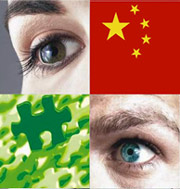of why enthusiasm for the old values declined so dramatically
During the two decades (1983-2003) that John Gittings reported on China for the British newspaper The Guardian, he witnessed many dramatic events. Indeed, as his new book, The Changing Face of China: From Mao to Market, suggests, Gittings observed the astonishing transformation of China’s way of life over the past several decades. Much of that transformation, he says, has contributed to overall economic progress and specific advances in such areas as agriculture and technological innovation. But Gittings also warns of a potentially threatening situation facing 21st century China -- an escalating environmental crisis resulting from the country’s rush to modernization.

of why enthusiasm for the old values declined so dramatically
Sign up to stay informed about our latest article releases.